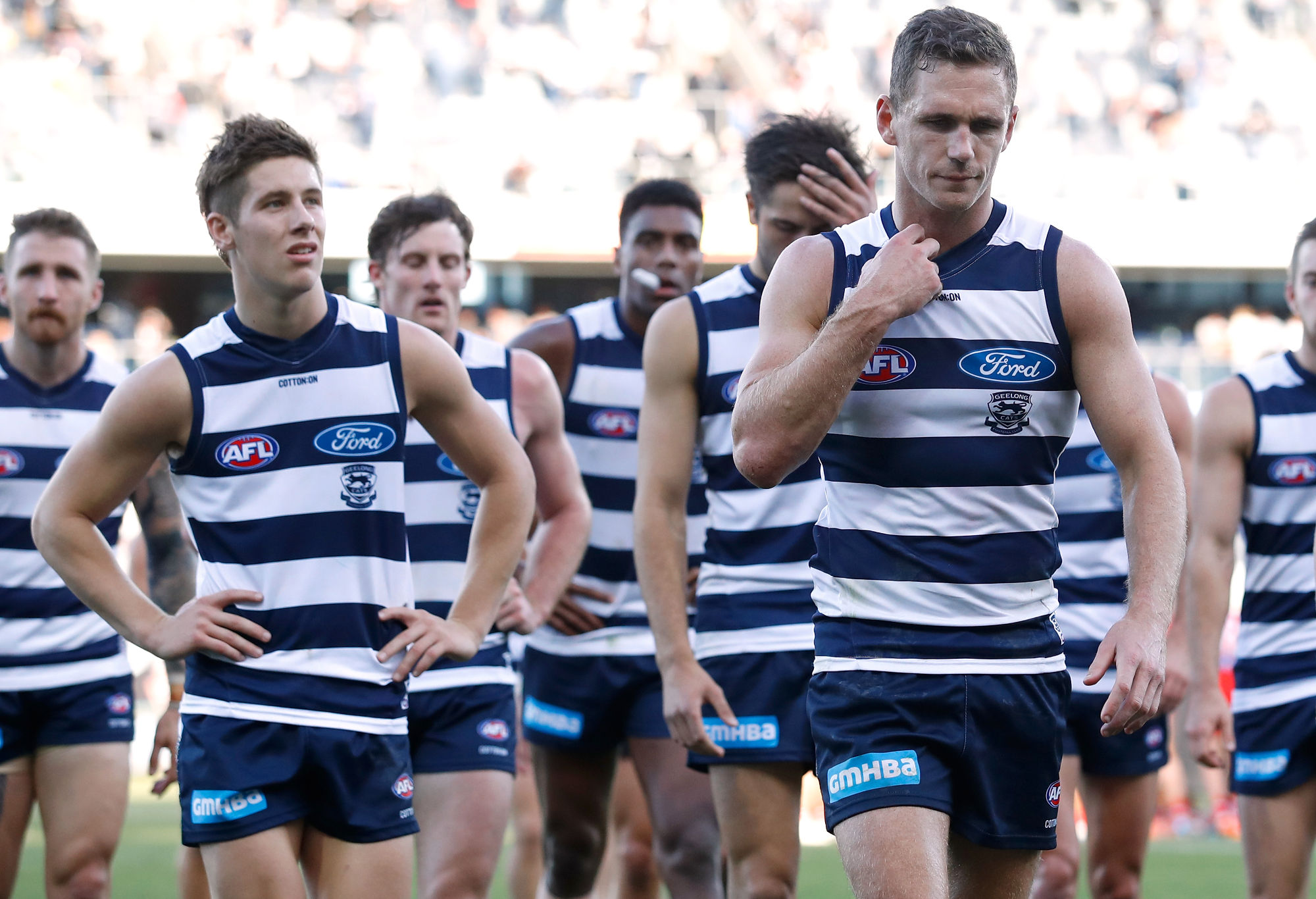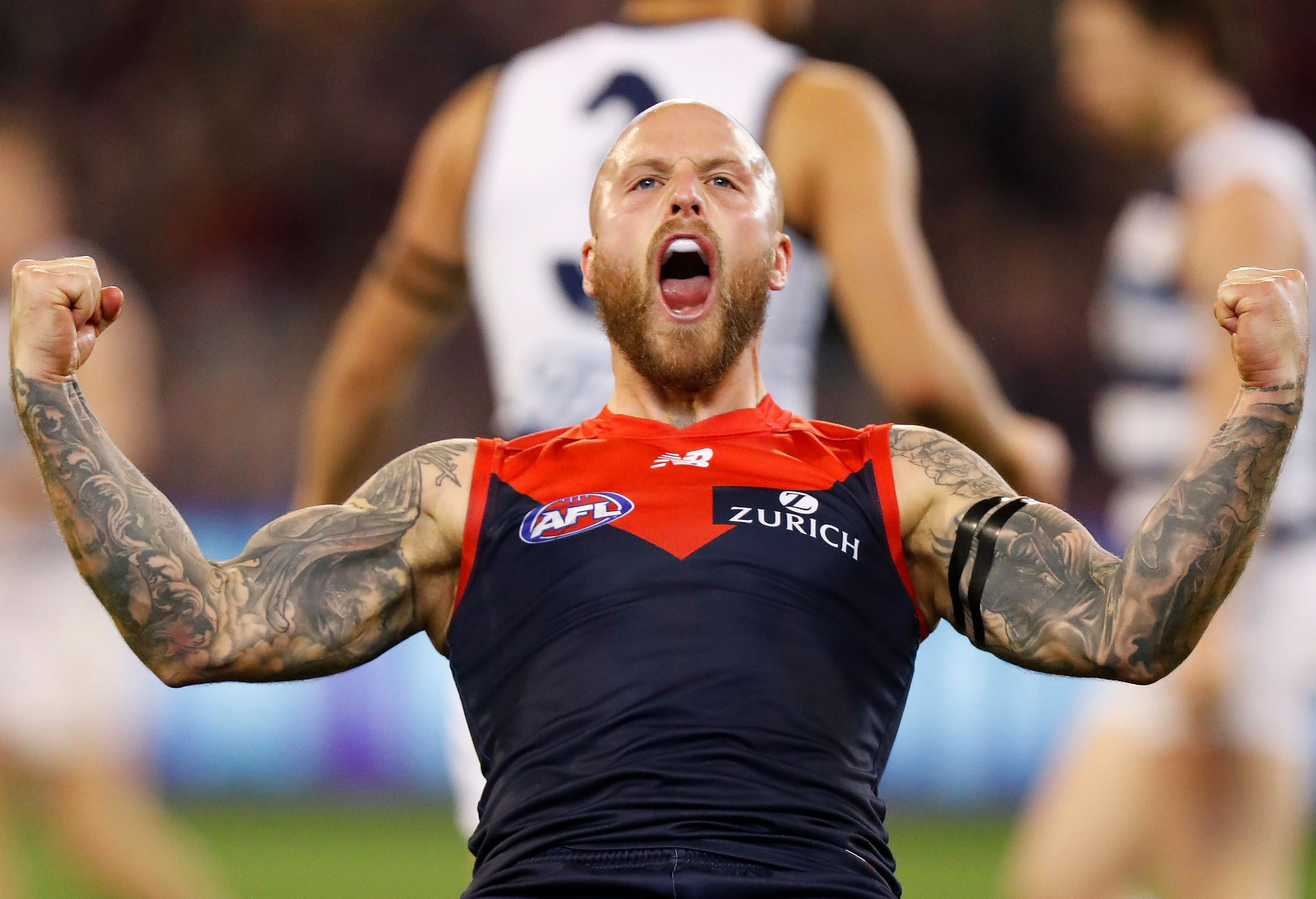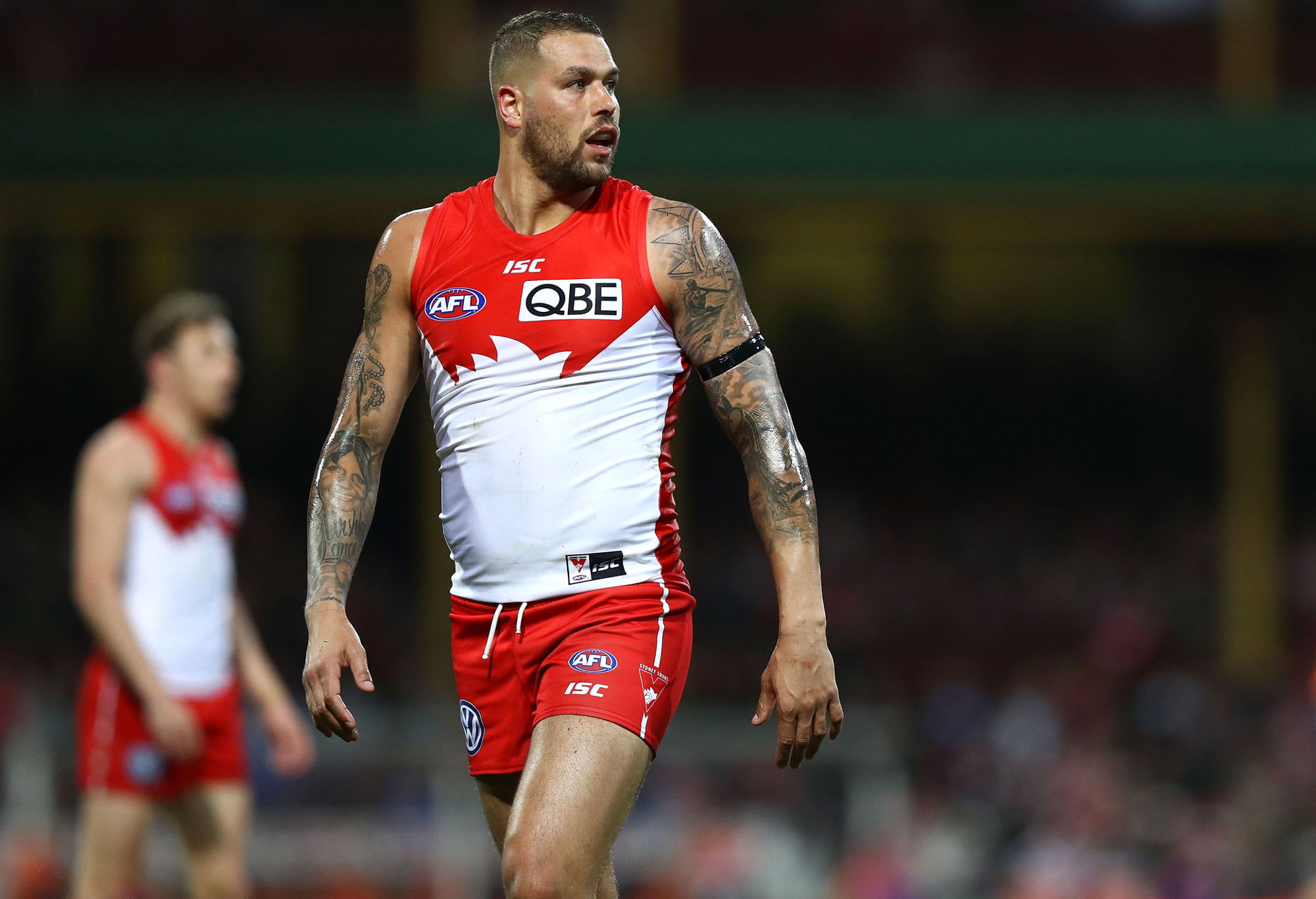AFL News: Scott hits out at 'offensive' Tribunal call to clear Cameron, Pies to swoop on star Dog?
Geelong coach Chris Scott has hit out at the AFL Tribunal's decision to clear Charlie Cameron for his dangerous tackle on Jake Lever, saying…
At the start of this season there were high hopes for both the Geelong Cats and Sydney Swans.
Both teams were expected to contend for the flag this year, with the Cats successfully luring favourite son Gary Ablett Junior back to Kardinia Park and the Swans being led by the modern game’s greatest full forward, Lance Buddy Franklin, and captain Josh Kennedy.
Ablett’s return to the Cats saw him join a midfield featuring captain Joel Selwood and Patrick Dangerfield, and with the trio together it was thought the club would take the next step up, having fallen in the preliminary final stage in the past two seasons.
However, Chris Scott’s men could manage only an eighth-place finish, winning their past two regular-season matches by over 100 points after they’d started Round 22 outside the eight, while the Swans endured a poor second half of the season, losing four of five between rounds 15 and 19 as well as in Round 23 against Hawthorn to crash from being top-four certainties to a sixth-place finish.
Both sides bowed out of the finals in embarrassing fashion, with the Cats going down to Melbourne by 29 points at the MCG and the Swans being humiliated on their own SCG turf by the Greater Western Sydney Giants by 49 points, registering their lowest-ever score at the iconic ground.
On Friday night the Cats conceded the first five goals of the match, but while they were able to keep the Dees goalless in the second quarter, they were forced to play catch-up after quarter-time.

(Adam Trafford/AFL Media/Getty Images)
Despite their best efforts, they would eventually crash to their ninth defeat in their past 12 finals matches dating back to their 2012 elimination final defeat by Fremantle at the MCG, ending a season that had started with so much promise.
It was their earliest finals exit since 2012, which meant they missed out on a semi-final clash with Hawthorn that would’ve added to the recent storied rivalry between the two clubs dating back to the 2008 grand final.
Considering the star power in the side – not just the aforementioned trio of Ablett, Dangerfield and Selwood but also forward Tom Hawkins and unsung defenders Tom Stewart and Tim Kelly – the season could be considered somewhat of a disappointment.
They struggled to get anything going, often dropping games they should have won, such as those against the Sydney Swans, Essendon and the Western Bulldogs in Rounds 6, 9 and 15 respectively, and often leaving it late to win the games they did win, such as the two matches against the Dees in rounds 1 and 18.
Some questions to be asked as the Cats undergo their off-season postmortem will include, among others, whether Gary Ablett is past his use-by date, whether opposition sides able to figure out their game plan, and how they were so easily exposed by a side that hadn’t played a finals match for over a decade.
Another question will be why they couldn’t live up to the hype given Ablett’s long-awaited return to the club after seven years on the Gold Coast.
As for the Dees, the result avenged those two heartbreaking losses during the regular season and was also some sort of payback against a club tat had tortured them the most during their finals exile, including three losses by more than 100 points.
The most notable of those losses was by a near-record 186 points, a result which saw then-coach Dean Bailey dismissed with five rounds remaining in the 2011 season. Even at that point the Dees were still a chance to play finals, but they ended up finishing 13th.

(Michael Willson/AFL Media/Getty Images)
Meanwhile, the Swans crumbled under the pressure applied to them by their little brothers, the GWS Giants, registering their lowest ever score at the SCG – 4.6 (30) – and the lowest score by either side in the history of the Sydney derby.
The first half was close as both sides struggled to adapt to the wet conditions, but the Giants broke the game open after half-time, romping to their biggest-ever win over the Swans and reversing two frustrating defeats to their bigger brothers during the regular season.
What stood out the most was that between halfway through the second quarter and the dying minutes of the match the Swans could not kick a single goal, kicking the only a final two in junk time when the match was already out of their reach.
All Australian captain Lance Franklin saved his worst for last, being kept to just a single behind and eight possessions by Giants fullback Phil Davis, who has developed into one of the best defenders in the competition during his time at the club.
It could have also been the final game in Swans colours for Dan Hannebery, who is being heavily pursued by St Kilda as he seeks a return home to Victoria during the trade period.
Like the Cats the previous night, another season that had started with so much promise for the Swans ended in bitter disappointment as they crashed to their earliest finals defeat since 2007 and earliest under coach John Longmire.
But the club reaching another finals series, their 20th in the past 23 seasons, is testament to Longmire and his ability to get the most out of what he had available after the retirement of Kurt Tippett and the knee injury suffered by Sam Naismith during the preseason.
He was also able to lift the club out of its midseason form slump that saw them lose four out of five matches between Rounds 15 and 19 and drop from fourth to outside the eight.

(Ryan Pierse/Getty Images)
They won consecutive matches against Collingwood, Melbourne and GWS to revive their finals chances before their loss to Hawthorn in Round 23 saw them settle for sixth on the ladder.
The loss to the Giants also marked their seventh defeat from 12 outings at the SCG this season, marking the first time since 2000 that they’d lost as many matches at their spiritual home.
What has become clear this season is that opposition teams have been able to figure out how to play the Swans at the ground, none more so than the Gold Coast Suns, who came from five goals down at quarter-time to pull off a stunning 24-point win in Round 18.
It was also the second time the Swans had fallen to the Giants in a finals match, after the AFL’s youngest club pulled off a 36-point upset win at ANZ Stadium in the first qualifying final two years ago.
That result came to show that the Giants would no longer be intimidated by the presence of bigger brother in September, the Swans having missed the finals just three times since 1995 and finishing with a percentage of below 100 only once in that period.
And so a long summer of soul-searching has begun at Kardinia Park and the SCG, while their conquerors, Melbourne and the GWS Giants, go on to face Hawthorn and Collingwood respectively in the semi-finals next weekend.
It marks the first time since 2002 that neither club will feature past the first week of September. Neither club made the finals that year.